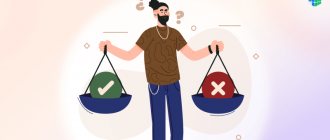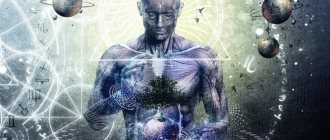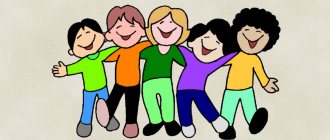More than 20 years ago, Andrei Makarevich prophetically sang about the advent of the “era of great dislike.” I would be glad if someone refutes this thesis, but according to my feelings, this very “dislike” is becoming more and more common in society.
Sociologists talk about times of radical individualism , when the main social value is the possibility of absolutely free self-expression. Absolutely free means not limited by anything. This is not just the freedom to shout to the whole world: “I feel so!”, “I understand so,” but also to demand that others agree with their opinion, regardless of its accuracy, objectivity, ethics, etc.
Human court
If those around you refuse to do this, then you need to force them to agree! How can you do this “not out of love”? For example, through the court. And it’s even easier through human court. Whoever raises the loudest cry, whoever is the “bigger victim”, hundreds and thousands of anonymous people on social networks will stand up for him.
But unlike an official court, no one will collect or verify evidence. There are enough emotions: for the “victim” to feel sorry for her, and for her “offender” to cause disgust and indignation.
This is very reminiscent of a speedy trial during times of revolutions and coups. The main factor in decision-making there was “class instinct”: “If this person is not like us, if he thinks differently, if he does not agree with our revolutionary idea, then shoot on the spot!” Today, executions have been replaced by bullying on the Internet and other delights of “cancel culture,” so the progress of civilization is obvious. But I wouldn’t be very happy, because only the technical equipment has changed, and in our behavior we are not much different from aggressive monkeys expelling the “black crow” from the pack.
It pays to be a victim
Supporters of freedom of expression, who are ready to tell the whole world “how they feel,” usually care little about the feelings of the other side, which is supposed to recognize and respect their feelings. And they also keep silent about the fact that simple self-expression (let’s say, throwing out their experiences “into nowhere” to just make them feel better) is usually not enough for them.
A simple two-step manipulation is played out: if you recognized my feelings, then you owe me... (and then a list of demands). And in general, the role of the victim, regardless of whether there are at least some objective grounds for it, is extremely convenient for making others feel guilty and shifting their selfish interests onto their shoulders. In psychotherapy this is called “secondary gain”, just google it for curiosity’s sake.
In fact, it turns out that behind “radical individualism” lies aggressive and manipulative egoism. One of my good friends called this position “centropupism” - when a person not only considers himself, his feelings, opinions and needs, but also demands appropriate recognition from others, not only in words, but also in deeds. But what we end up with is a society where everyone is trying to force/force everyone to “respect me.” Not out of love, but because it will be worse...
The nature of emotions
- Intellectualistic approach. Organic manifestations of emotions act as a consequence of mental phenomena.
- Theory I.F. Herbart. The scientist claims that the most important psychological fact is the representation, respectively, of feelings - this is the connection between existing ideas; they can be seen as a reaction to a conflict between ideas.
- Position of V. Wundt. Emotions represent certain changes that characterize the influence of feelings on the course of the ideas themselves.
Is it possible to somehow change the situation?
Or will we increasingly exist according to the principle of “man is a wolf to man”? The mentioned song contains the following words: “I really appreciate the warmth of relationships / In an era of great dislike.” Perhaps social feelings will help add this “warmth of relationship.” They are quite diverse, I will mention only three of them: gratitude, empathy and pride .
The idea is very simple: before presenting your feelings/opinions/demands to the addressee, ask yourself a few questions:
1. What am I grateful for to this person/these people? What is important is not a formal answer with an attached list of specific facts. It is important to find a positive emotional response within yourself, no matter how small. We are talking about the feeling of gratitude: what is good, strong, beautiful, kind in you thanks to or in spite of these people?
And another important point... Be sure to ask yourself, what can I be grateful to these people for in the future? And how can I express my gratitude to them?
2. How does this person/these people feel? Can they feel the same way I do? How do I want (or not want) to change their feelings? What will happen if I manage to make them feel... (what I would like)? How will this change our relationship in the long term? What emotional response will this create in the larger system of relationships? (Or you can put it this way: what emotional energy do I send into the world? Is it destructive or creative?
3. Can I be proud/respect/admire – no, not myself! – and by this person/people? I don’t have to appreciate and respect them “wholly and completely,” but there is something uniquely good about them?! Can I be proud/respect/admire myself! – namely, how I behave or plan to act in this situation? Can we - all participants in this situation, people dear to us (friends, children and grandchildren, moral authorities, etc.) - be proud/respect/admire how we behave and how we act in this situation?
In conclusion, I will say that I understand perfectly well that the recipe is weak... Inveterate egoists with poorly developed empathy are unlikely to understand what these questions are about and why they need them. But perhaps it will be useful to someone. To survive the “era of great dislike.”
Recommendations
- Shlomo Khareli; Brian Parkinson. “What is social about social emotions?” (PDF). research.haifa.ac.il
. Retrieved January 6, 2022. - Stephanie Burnett; Geoffrey Bird; Jorge Moll; Chris Frith; Sarah-Jane Blakemore (September 2009). "Development in adolescence of neural processing of social emotions." Journal of Cognitive Neuroscience
.
21
(9): 1736–50. doi:10.1162/jocn.2009.21121. PMC 4541723. PMID 18823226. - Lewis, Michael. Shame: The Naked Self
. New York: Free Press;, 1992. 19. Print. - Inelder, B., & Piaget, J. (1958). Development of logical thinking from childhood to adolescence. New York, USA: Basic Books.
- Wainryb, C.; Shaw, LA.; Maianu, K. (1998). "Tolerance and Intolerance: Children's and Adolescents' Judgments of Dissent, Speech, People and Behavior." Child development
.
69
(6):1541–1555. Doi:10.1111/j.1467-8624.1998.tb06176.x. - Zahn-Waxler C, Robinson J. 1995. Sympathy and guilt: the early origins of a sense of responsibility. In Self-conscious emotions, ed. J. P. Tangney, K. W. Fischer, pp. 143–73. New York: Guilford
- Stipek, Deborah J; J. Heidi Gralinski; Claire B. Kopp (November 1990). "Development of self-concept in early childhood." Developmental Psychology
.
26
(6):972–977. Doi:10.1037/0012-1649.26.6.972. - ^ a b
Harris, P. L.;
Olthof, K.; Terwogt, M. M.; Hardman, K. S. (September 1987). "Children's knowledge of situations that evoke emotions." International Journal of Behavioral Development
.
3. 10
(3): 319–343. Doi:10.1177/016502548701000304. - Cwir, D.; Carr, P. B.; Walton, G. M.; Spencer, S. J. (2011). “Your Heart Makes My Heart Move: Social Connection Cues Induce Shared Emotions and Physiological States Among Strangers.” Journal of Experimental Social Psychology
.
47
(3):661–664. Doi:10.1016/j.jesp.2011.01.009. - ^ a b c
Eisenberg, Nancy (February 2000).
"Emotions, Rules, and Moral Development." Annual Review of Psychology
.
51
(1):665–697. doi:10.1146/annurev.psych.51.1.665. PMID 10751984. - ^ a b
Sanfey, A. G.;
James K. Rilling1; Jessica A. Aronson; Lee E. Nystrom1; Jonathan D. Cohen (June 13, 2003). "The neural basis of economic decision making in the ultimatum game." The science
.
300
(5626): 1755–1758. Bibcode:2003Sci...300.1755S. Doi:10.1126/science.1082976. PMID 12805551. - Zeman, J.; Cassano, M.; Perry-Parrish, C.; Stegall, S. (2006). "Emotion regulation in children and adolescents." Journal of Developmental and Behavioral Pediatrics
.
27
(2): 155–168. Doi:10.1097/00004703-200604000-00014. PMID 16682883. - Elkind, David; Bowen, Robert (1 January 1979). "Imaginary audience behavior in children and adolescents." Developmental Psychology
.
15
(1): 38–44. Doi:10.1037/0012-1649.15.1.38. - Blakemore, S.J.; den Ouden, H.; Choudhury, S.; Frith, K. (1 June 2007). "Development of a neural circuitry for thinking about intentions in adolescents." Social cognitive and affective neuroscience
.
2
(2): 130–139. Doi:10.1093/scan/nsm009. PMC 1948845. PMID 17710201. - MORIGUCHI, YOSHIYA; OHNISHI, TAKASHI; MORI, TAKEYUKI; MATSUDA, HIROSHI; KOMAKI, GEN (August 1, 2007). "Brain activity changes in the neural substrates for theory of mind during childhood and adolescence." Psychiatry and Clinical Neurosciences
.
61
(4): 355–363. Doi:10.1111/j.1440-1819.2007.01687.x. PMID 17610659. - ^ a b
Burnett, S;
Bird, G; Moll, J; Frith, S; Blakemore, S. J. (September 2009). "Development in adolescence of neural processing of social emotions." Journal of Cognitive Neuroscience
.
21
(9): 1736–50. doi:10.1162/jocn.2009.21121. PMC 4541723. PMID 18823226. - Frith, K. D. (29 April 2007). "The Social Brain?" Philosophical Transactions of the Royal Society B: Biological Sciences
.
362
(1480):671–678. Doi:10.1098/rstb.2006.2003. PMC 1919402. PMID 17255010. - Zahn, R.; Moll, J.; Krueger, F.; Huey, E.D.; Garrido, J.; Grafman, J. (2007, April 10). "Social concepts are represented in the superior anterior temporal cortex." Proceedings of the National Academy of Sciences
.
104
(15):6430–6435. Bibcode:2007PNAS..104.6430Z. doi:10.1073/pnas.0607061104. PMC 1851074. PMID 17404215. - ^ a b
McCabe, K. (September 25, 2001).
"A functional imaging study of cooperation in reciprocal exchange between two people." Proceedings of the National Academy of Sciences
.
98
(20):11832–11835. Bibcode:2001PNAS ... 9811832M. doi:10.1073/pnas.211415698. PMC 58817. PMID 11562505. - Kahneman, Daniel (December 2003). "Maps of Bounded Rationality: Psychology for Behavioral Economics." American Economic Review
.
93
(5):1449–1475. CiteSeerX 10.1.1.194.6554. Doi:10.1257/000282803322655392. JSTOR 3132137. - Kahneman, Daniel; Jack L. Knetsch; Richard H. Thaler (Winter 1991). "Anomalies: The Donation Effect, Loss Aversion, and Bias." Journal of Economic Perspectives
.
5
(1): 193–206. Doi:10.1257/jep.5.1.193. JSTOR 1942711. - Ellsberg, Daniel (November 1961). "Risk, Ambiguity and Wild Axioms" (PDF). Quarterly Journal of Economics
.
75
(4):643–669. Doi:10.2307/1884324. JSTOR 1884324. - Camerer, Colin F. (2003). Experiments in behavioral game theory in strategic interaction
. New York [ua]: Russell Sage [ua] ISBN 978-0-691-09039-9. - Eisenberger, N. I. (October 10, 2003). “Does refusal hurt? An fMRI Study of Social Isolation.” The science
.
302
(5643):290–292. Bibcode:2003Science...302..290E. Doi:10.1126/science.1089134. PMID 14551436. - O'Doherty, J. (16 April 2004). "Dissociative roles of the ventral and dorsal striatum in instrumental conditioning". The science
.
304
(5669):452–454. Bibcode:2004Science…304..452O. Doi:10.1126/science.1094285. HDL:21.11116/0000-0001-A0A8-C. PMID 15087550. - de Quervain, D. J.-F. (August 27, 2004). "The neural basis of altruistic punishment". The science
.
305
(5688):1254–1258. Bibcode:2004Scientific ... 305.1254D. Doi:10.1126/science.1100735. PMID 15333831. - Ferguson TJ, Stegge H. 1998. Measuring guilt in children: A rose by any other name still has thorns. In Wine and Children, ed. J. Bybee, pp. 19–74. San Diego: Academic
- ^ a b
Tangney, June P. (January 1, 1991).
"Moral Affect: The Good, the Bad, and the Ugly." Journal of Personality and Social Psychology
.
61
(4):598–607. Doi:10.1037/0022-3514.61.4.598. PMID 1960652. - Eisenberg, Nancy; Fabes, Richard A.; Murphy, Bridget; Carbone, Mariss; and others. (January 1, 1994). "The relationship of emotionality and regulation to dispositional and situational responses associated with empathy." Journal of Personality and Social Psychology
.
66
(4):776–797. Doi:10.1037/0022-3514.66.4.776. - Weiner, Bernard (2006). Social motivation, justice, and moral emotions: An attributional approach
. Mahwah, New Jersey [ua]: Lawrence Erlbaum Associates. ISBN 978-0-8058-5526-5. - Weiner, Bernard (1 January 1985). "An Attributional Theory of Achievement Motivation and Emotion." Psychological Review
.
92
(4):548–573. Doi:10.1037/0033-295X.92.4.548. PMID 3903815. - Weiner, Bernard; Perry, Raymond P.; Magnusson, Jamie (1 January 1988). “Attributional analysis of reactions to stigmas.” Journal of Personality and Social Psychology
.
55
(5):738–748. Doi:10.1037/0022-3514.55.5.738.











